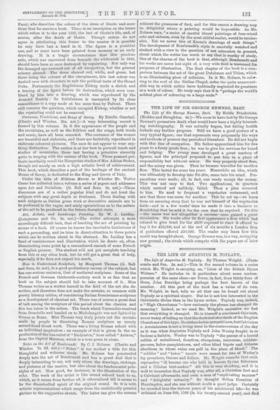Notes on the Art of Rembrandt. By C. J. Holmes.
(Chatto and Windus. 75. Od. net.)—" Nat" is too modest a title for this thoughtful and welcome study. Mr. Holmes has penetrated deeply into the art of Rembrandt and has a groat deal that is deeply interesting to say, not only about the drawings, etchings, and pictures of the master, but also about the fundamental prin- ciples of art. How good, for instance, is the illustration of the echo. The work of the artist is like sound echoed back to us, which, as it comes from farther off, is etherealized till it seems to be the disembodied spirit of the original sound. So it is with artistic representations which range from the realistically painted picture to the suggestive sketch, The latter can give the essence
without the grossness of fact, and for this reason a drawing may be delightful where a painting would be impossible. As Mr. Holmes says, "a series of careful literal paintings of four-wheel cabs and cabmen, even by the most skilful realist, would be intoler- able. Yet we never tiro of Keene's drawings of such things." The development of Rembrandt's style is carefully watched and studied with a view to the question of art education in general, about which the writer has much to say that is worthy of study. One of the charms of the book is that, although Rembrandt and his works are never lost sight of, a very wide field is traversed for purposes of illustration. The final chapter of the book is a com- parison between the art of the great Dutchman and Titian, which is an illuminating piece of criticism. In it Mr. Holmes, in race- ring to the roof of the Sistine Chapel, notes the quite unaccount- able way in which critics have habitually neglected its greatness as a work of colour. He truly &tie that it is "perhaps tho world's noblest piece of colouring on a large scale."






















































 Previous page
Previous page